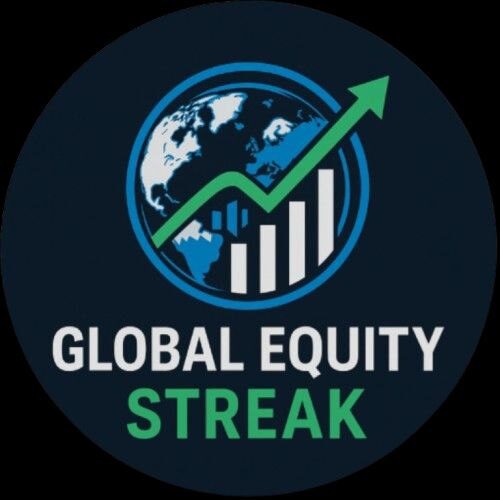The week of August 25–29, 2025 could decide Wall Street’s fate. With inflation data, GDP revisions, jobless claims, and Powell’s Fed signals on deck—plus blockbuster earnings from Nvidia, Alibaba, Dell, and more—markets brace for volatility. A September Fed rate cut hangs in the balance, making this one of the most decisive weeks of the year for U.S. stocks, investors, and the global economy.
The final week of August 2025 is shaping up to be a pivotal one for the U.S. financial markets. With critical economic data releases, high-profile corporate earnings, and speeches from Federal Reserve officials, investors are bracing for a week of volatility that could shape sentiment heading into September. At the center of the discussion is whether the Federal Reserve will move ahead with a rate cut next month—a possibility that markets are currently pricing in with more than 70% probability, according to the CME FedWatch Tool.
Here’s a detailed look at the key economic events, earnings, and market context to watch for the week of August 25–29, 2025.
Key Economic Events will Fed Cut rates ?
Monday, August 25
The week begins with the release of July new home sales. As a leading indicator for the housing market, this report offers insight into residential construction, mortgage demand, and overall consumer confidence in real estate. Recent data showed July existing home sales slipping to 3,915,000, down slightly from June’s 3,930,000. Alongside this, the Conference Board will publish August consumer confidence data, a key gauge of household sentiment. Any sign of weakness here could dampen expectations for consumer spending in the months ahead.
Tuesday, August 26
Markets will turn their attention to July durable goods orders, which track purchases of long-lasting manufactured goods. This is a vital measure of business investment and industrial demand. While no consensus estimate is available, the report is closely watched by equity and bond traders as an indicator of broader economic health.
Wednesday, August 27
The second estimate of Q2 GDP will be released. The advance estimate provided an initial picture of U.S. growth, but the revised numbers often carry significant weight for monetary policy decisions. A stronger-than-expected revision could reduce the urgency for the Fed to cut rates, while softer data may reinforce the case for easing.
Thursday, August 28
The day brings a data-heavy lineup, starting with weekly initial jobless claims. Last week’s figure rose to 235,000, raising concerns about potential softening in the labor market. Any further increase could intensify worries that employment momentum is fading.
In addition, the July Personal Consumption Expenditures (PCE) Price Index will be released. As the Fed’s preferred inflation gauge, both headline and core PCE will be under scrutiny. With tariffs continuing to ripple through supply chains, investors will look for signs of whether inflationary pressures are persisting or cooling. The data could directly impact the Fed’s decision-making for September.
The July personal income and spending report will also be published, providing a window into household financial health. Since consumer spending drives two-thirds of the U.S. economy, stronger or weaker numbers could have direct implications for retailers, discretionary stocks, and overall GDP outlook.
Friday, August 29
The week concludes with the University of Michigan’s final reading of August consumer sentiment. This survey will either confirm or revise earlier preliminary results, offering investors a last look at consumer psychology before September begins.
Key Earnings Reports
Beyond economic data, earnings season continues to provide stock-specific catalysts.
On Tuesday, August 26, MongoDB and Box will report results. Both companies are seen as barometers for enterprise tech spending and digital transformation adoption.
Wednesday, August 27 will feature one of the most anticipated earnings releases of the season: Nvidia. The chipmaker has become the poster child for artificial intelligence and hyperscale data center growth. Analysts expect robust numbers, with hyperscale spending projected to rise 67% year-over-year. Nvidia’s stock is already up 30% in 2025, far outpacing the S&P 500’s 10% gain, making this report a potential market mover.
On the same day, retail players Kohl’s, Urban Outfitters, and Five Below will release earnings, providing insight into consumer spending trends amid tariff headwinds. Cybersecurity firm CrowdStrike and cloud data company Snowflake will also post results, influencing sentiment in high-growth tech.
Thursday, August 28 will see earnings from Royal Bank of Canada, Dell, Marvell Technology, Autodesk, Ulta Beauty, Gap, and Petco. Royal Bank of Canada is expected to report earnings of CA$3.31 per share, up 1.5% year-on-year, on revenue of CA$16.03 billion, a 9.6% increase. Its performance could sway sentiment in the broader financial sector, especially following a recent dividend hike.
Tech investors will focus on Dell, Marvell, and Autodesk for signs of hardware and software demand. Meanwhile, Ulta, Gap, and Petco will provide snapshots of the retail environment. Alibaba will also report, with results that could set the tone for U.S.-listed Chinese stocks, particularly in e-commerce and cloud computing.
Market Context and Sentiment
Federal Reserve policy remains the dominant theme for markets this week. Chair Jerome Powell’s Jackson Hole speech on August 22 signaled that the Fed is leaning toward a September rate cut, sparking a relief rally in the S&P 500. However, not all Fed officials share the same dovish tone. Chicago Fed President Austan Goolsbee recently described the latest producer price index data as “dangerous,” suggesting there is still internal caution about cutting too soon. Investors will parse speeches from multiple Fed officials throughout the week for additional clarity.
Trade policy and tariffs also remain in the spotlight. President Trump’s recent tariff measures, averaging between 15% and 20%, continue to weigh on global trade outlooks. While temporary pauses in tariffs with the EU and Japan have provided some relief, ongoing negotiations with China and higher levies elsewhere could generate further market volatility.
Meanwhile, technical indicators suggest fragility in equities. The S&P 500 recently dipped below its 20-day moving average at 6,381, raising the risk of further downside if support between 6,290 and 6,315 fails to hold. August has historically been a volatile month for markets, with the VIX index rising an average of 8.4% since 1990. This seasonal trend, combined with uncertainty over Fed policy and trade tensions, could amplify price swings.
Sector Focus
Amid expectations of Fed easing, rate-sensitive sectors such as consumer discretionary and financials are in the spotlight. Mid-cap stocks are also drawing interest from investors seeking growth opportunities in a potentially lower-rate environment. However, technology remains the centerpiece, with Nvidia’s earnings and broader AI-related developments likely to drive sentiment for the entire sector.
Conclusion
As the week unfolds, investors will be watching every data release, corporate result, and Fed comment for signals about the September policy meeting. With markets pricing in a 71.5% chance of a rate cut, the stakes are high. The balance between inflation risks, labor market signals, and consumer resilience will determine whether the Fed follows through on easing next month. Until then, market volatility is almost guaranteed, making this one of the most important weeks of the summer for U.S. markets.

